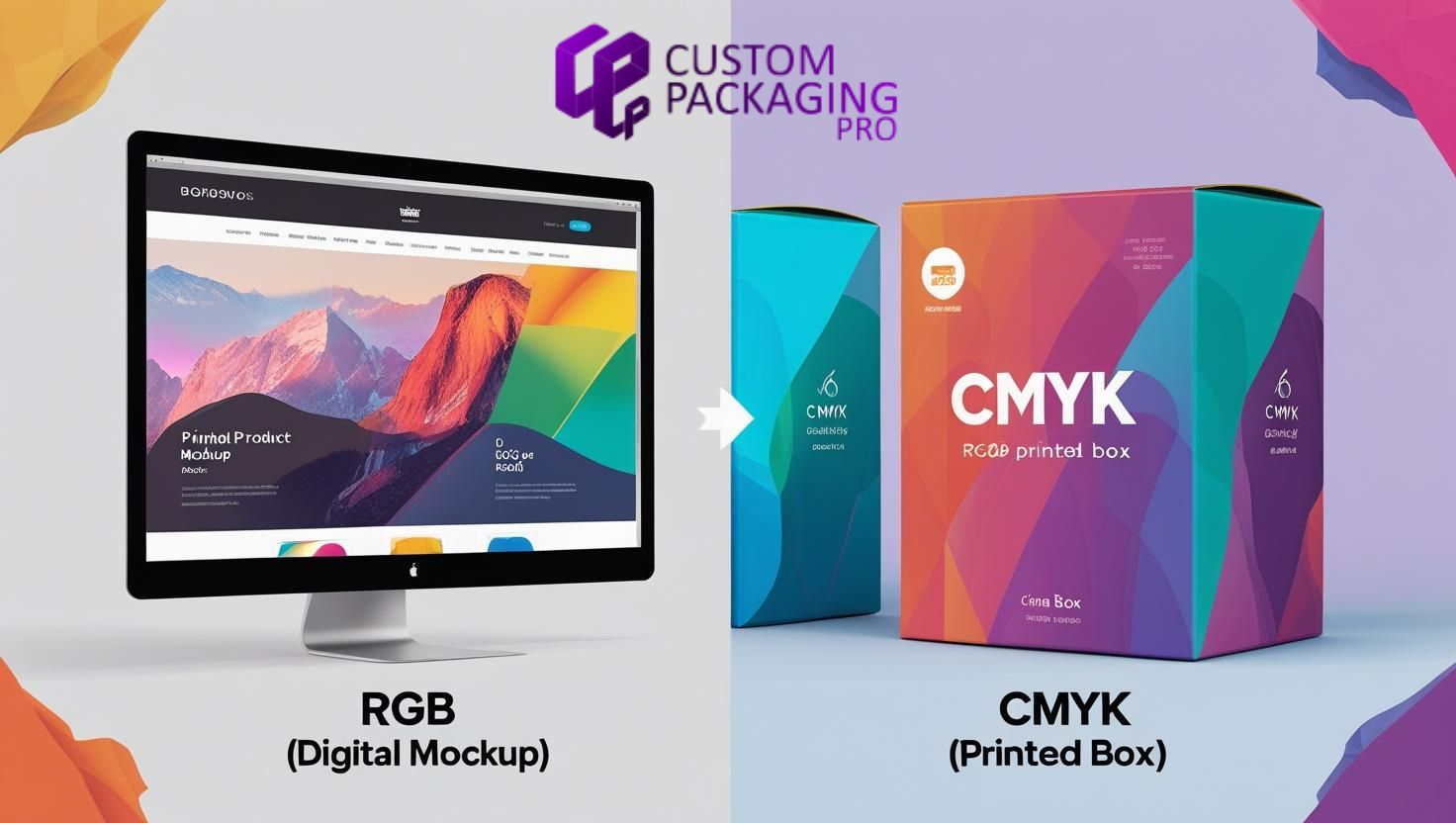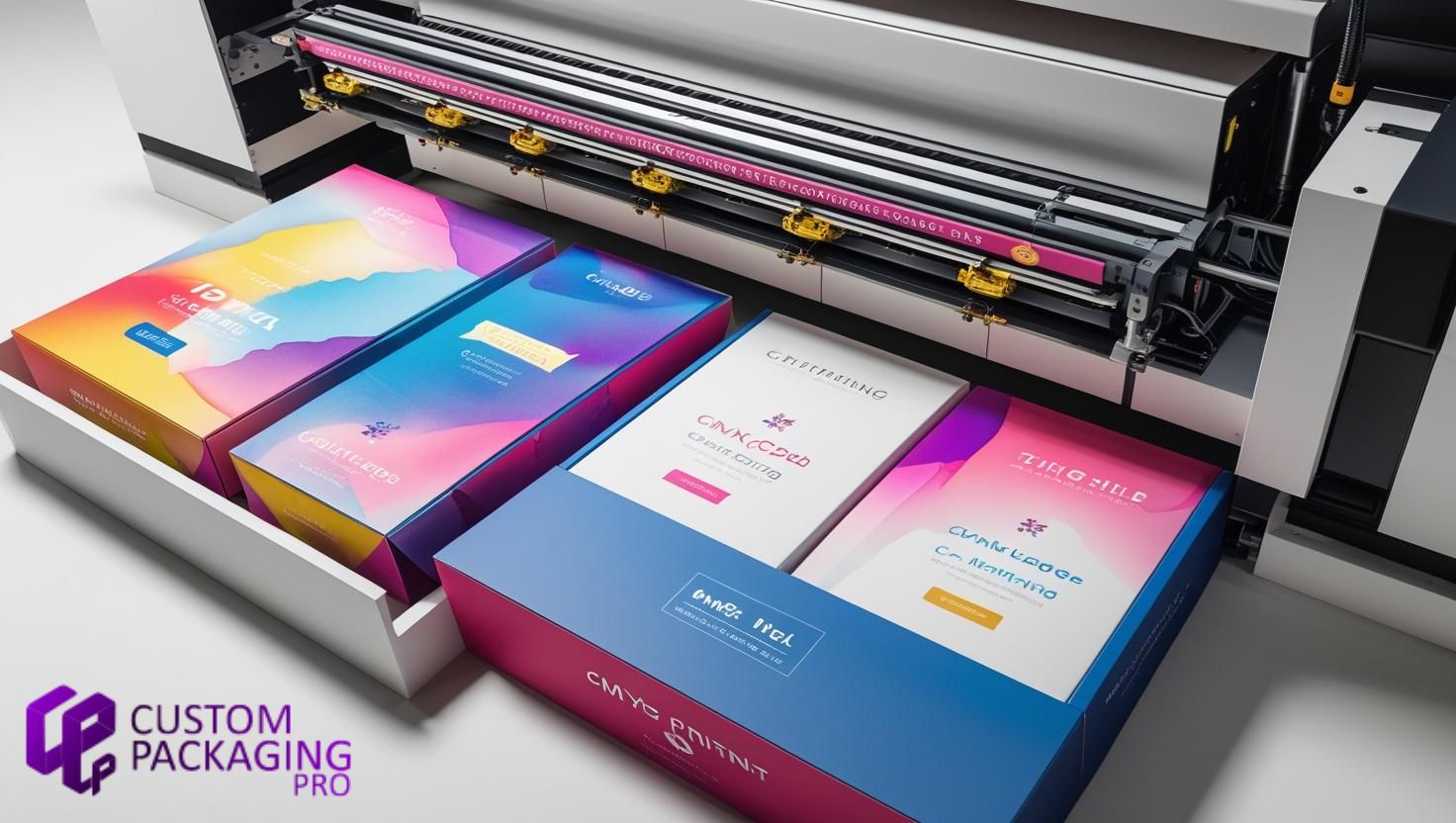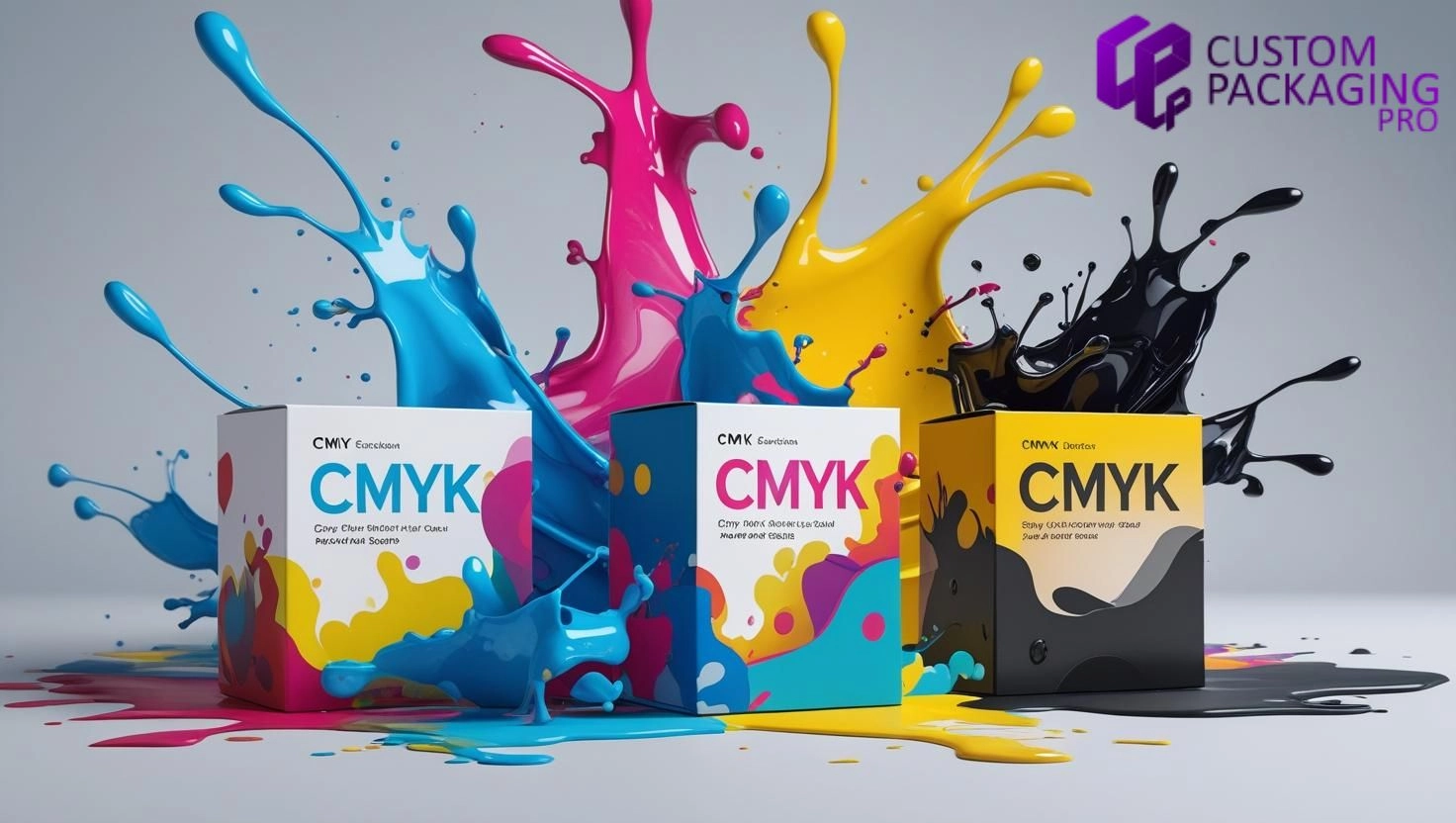June 13, 2025
Understanding CMYK: The Color Model Behind Premium Packaging
Ever asked "what is CMYK?" or wondered "what does CMYK stand for?" In the world of printing and packaging, mastering CMYK meaning is essential for creating vivid, accurate designs. At Custom Packaging Pro (CPP), we use the CMYK color model—Cyan, Magenta, Yellow, and Key (Black)—to ensure every box we produce pops with color while retaining consistency.
The Importance of Color in Design and Branding
Color is not just a cosmetic decision; it's a potent force that can affect people's perception of a brand. Proper selection of colors can inspire feelings, build associations, and motivate consumer activity. Knowing the science of color application is important for marketers and designers, particularly when making decisions about whether to utilize PMS (Pantone® Matching System) colors, CMYK (Cyan, Magenta, Yellow, Key or Black) colors, or RGB (Red, Green, Blue) colors.
How Color Influences Emotions and Decisions
From the energy of red to the tranquility of blue, color deeply affects psychology. Take red, for instance, which is commonly linked to urgency or excitement, hence its frequent use in sales signs or fast food restaurants. Green, however, is connected with growth, health, and calmness, making it a common pick for wellness and eco-friendly brands.
Knowing how colors influence the behavior of humans is most important to make your brand noticeable in a competitive marketplace. Making the wrong color choice will confuse your consumers or give them the wrong impression, which will weaken your brand's identity.
What Does CMYK Mean?
CMYK is the abbreviation for Cyan, Magenta, Yellow, Key (Black) and is applied to printed media. In the CMYK color model, everything begins as white, until cyan, magenta, yellow and/or key (black) ink layers are layered on top to lower the original brightness until the optimal color is reached.
CMYK stands for the four ink colors used in printing—cyan, magenta, yellow, and black. The CMYK system blends these colors to create about 16,000 variations.
C = Cyan
Cyan lies between blue and green, yet the majority perceive it as the former. It's like sky blue or the aqua blue found in tropical oceanic waters.
M = Magenta
Magenta lies between red and blue, but the majority regard the color as being closer to red rather than blue. It's akin to hot or deep pink and fuchsia. People identify this color with orchids and bougainvillea flowers.
Y = Yellow
Yellow is the lemon yellow, canary yellow, and gold hues we see in nature, such as sunflowers, daffodils, and sunshine.
K = Key (Black)
Black is the color of coal, volcanic rock, and some gemstones like obsidian and onyx. The other meaning of “K” is “key” because the black ink plate provides fine details, depth, and contrast in the resulting image. Thus, “key plate” is the other term referring to the black plate.
As a subtractive color model, CMYK works by subtracting light from white paper. The more ink applied, the darker the color—opposite of additive models like RGB. Hence, why CMYK vs RGB comparison is common: digital screens use RGB and CMYK for print, but RGB cannot replicate printed vividness.
How Does CMYK Work?
When you present your packaging design to a commercial offset printer like Custom Packaging Pro, the business breaks down your file into component colors through what's referred to as the color separation process.
There is a distinct printing plate for each color CMYK ink, and the ink offsets or transfers from this plate onto a rubber blanket and further onto paper in the form of minute dots. The colors become steady and continuous as the dots overlap one another until the process printing or four-color process is done.
In the meantime, digital printing does not need color separation. The ink directly goes onto paper rather than plates so they are affordable if you have a lower order printing.
The printer prints out the image from your file. From there, single CMYK color droplets create the appearance of a colored image. Inkjet printers utilize ink whereas laser printers utilized in commercial settings use toner.
Why Use CMYK for Print?
Printers rely on CMYK for print because it perfectly aligns with four‑color printing presses. These inks blend to create a full spectrum of colors, from rich purples to deep greens. A CMYK color table outlines standard percentages—like 100 C, 0 M, 0 Y, 0 K for pure cyan—guiding designers and printers. Want a metallic gold box? You’ll need spot color (Pantone) or PMS 485C, but most colorful packaging runs on CMYK colours.
CMYK vs RGB: What’s the Difference?
You observe RGB (Red Green Blue), an additive model of colours, on your screen. When the lights are fully lit, the display will be white. On the other hand, CMYK colour space is a model that subtracts light to create colour. For this reason, designs normally end up darker or less colourful on paper compared to mock-ups on the screen. That's why we always set designs to CMYK mode prior to printing. Asking "difference between CMYK and RGB?
" is a favorite among customers, and CPP makes sure you're not caught off guard by color changes.
When to Use CMYK
Use CMYK color for:
- Packaging designs (tuck boxes, flower box container die cuts)
- Brochures, posters, labels, and direct mail
- Nearly all physical print jobs
Resist uploading RGB files for printing—converting to CMYK format prevents unexpected color outcomes. If you use Pantone (PMS cool grey 11, PMS 312, or PMS 806), we’ll help you choose between Pantone or CMYK, depending on color accuracy needs.
Understanding Color Gamut & Profiles
Each printer possesses a CMYK color gamut—the set of printable hues. A CMYK color profile controls this so that it is consistent from device to device. That's critical in packaging: your brand's bubble gum pink (such as Bubble Gum Strain packaging) or Gelato Strain's purple shade has to be consistent from prototype through final run.
Want to control color on your monitor? Utilize a color grading monitor or calibrate to color swatches CMYK to see what it will look like when printed. At CPP, we have systems to compare your CMYK colour mode to guarantee fidelity.
Key Differences Among CMYK, RGB, and PMS
Although CMYK, RGB, and PMS are all color models, they are designed for different applications. CMYK is ideal for printing, RGB is used for digital displays, and PMS offers a standardized color matching system, ensuring consistent reproduction across various materials.
CMYK is subtractive and uses four ink colors (Cyan, Magenta, Yellow, and Key or Black).
RGB is additive and combines Red, Green, and Blue light to create colors.
PMS colors (Pantone Matching System) are predefined, standardized colors often used for logos and branding where exact color matching is critical.

Understanding Color Theory for Print Perfection
Characteristics of CMYK Colors
CMYK is mainly applied in print. Cyan, Magenta, Yellow, and Black inks are mixed in different amounts to create almost every color in this model. Unlike RGB, which is light-based, CMYK employs physical pigments. The darker the color, the more ink is used, thus it is a subtractive process.
Applications of CMYK in Printing
CMYK is the default model for everything print-based, from business cards to custom brochures. It provides flexibility when using a high volume of printed pieces. The four-color process can reproduce rich, full-color graphics and images.
When to Use CMYK in Design
Use CMYK for any print design project. It's ideal for materials such as magazines, posters, or packages, where color representation is critical. Designers can be confident their color selection will translate well to print, as long as they remain within the CMYK gamut.
Characteristics of RGB Colors
In contrast to CMYK, the RGB color model is additive in nature, where colors are produced by combining various intensities of Red, Green, and Blue light. The RGB model is specially suited for use in digital devices like screens, mobile phones, and tablets.
Applications of RGB in Digital Media
The RGB model is ideal for whatever is being displayed on a screen, like a website, app, or online advertisement. Because digital devices give off light, RGB's additive approach makes the colors look bright and distinct.
When to Use RGB in Digital Design
Designers must always design using RGB for websites, social media images, and any other on-screen content. This model supports a wider range of colors than CMYK, and thus it is more appropriate to use in digital purposes.
Characteristics of PMS Colors
The PMS (Pantone® Matching System) is a universal color standard that allows designers and printers to ensure exact color matching, regardless of the medium or location. PMS colors are pre-mixed inks that create a consistent appearance across all platforms, which is essential for maintaining brand identity.
Applications of PMS in Branding
Businesses often use PMS colors for logos, product packaging, and other branded materials that require precise color matching. Since PMS offers more consistency than CMYK or RGB, it’s ideal for brand elements that must appear the same across multiple formats, from business cards to billboards.
Flexible CMYK Uses: Files, Formats, & Values
Designers encounter many CMYK file types, such as TIFF, PDF/X, and EPS. Internally, colors are defined by CMYK color values (e.g., 75C/0M/50Y/0K). If you need help calculating colors, a CMYK calculator comes in handy. From CMYK color combinations to mixing custom Pantones, CPP guides you to designs that shine.
CMYK vs Spot Color: When to Use What
Need brand‑exact red like PMS 485C? That’s when spot colors come into play. But if you're printing vibrant designs—like the Aroma Funk Strain packaging with funky teal and lime—CMYK printing is more cost-effective and flexible.
Skillful Color Management for Packaging
Here at CPP, our in‑house experts use CMYK, RGB, and PMS routinely to ensure perfect packaging. We convert RGB to CMYK for print, embed CMYK color profiles, and proof files to approximate final appearance before production. This avoids unexpected surprises in your final CMYK print results.
Final Takeaway: Color Done Right
From CMYK colour space to spot color choices, understanding these fundamentals helps you create packaging that wows. Whether you’re ready to print a custom box for your new hemp product or need crisp artwork for a flower box container die cut, CPP is here to guide you through every step.
Try It Out
Curious about CMYK vs RGB or whether your design is CMYK for print ready? Want a quote with Pantone spot color or a high‑quality CMYK print run?
Reach out to Custom Packaging Pro today—where vibrant product packaging meets technical accuracy to help your product stand out.

FAQ
Q1. What does CMYK stand for?
A. CMYK stands for Cyan, Magenta, Yellow, and Key (Black). These are the four primary colors used in the printing process to create a full range of printed colors.
Q2. What is the difference between RGB and CMYK?
A. RGB (Red, Green, Blue) is used for digital screens, while CMYK is used for printed materials. RGB is an additive color model, and CMYK is subtractive—meaning colors are removed or layered to create the desired effect.
Q3. Why do printers use CMYK instead of RGB?
A. Printers use CMYK because it blends physical ink to reproduce color. RGB cannot be used in print because it’s based on light emission, which only applies to screens.
Q4. When should I use the CMYK color model?
A. Use CMYK for print projects like brochures, packaging, business cards, or magazines to ensure color accuracy and consistency on physical materials.
Q5. What is the CMYK color gamut?
A. The CMYK gamut refers to the range of colors that can be reproduced using cyan, magenta, yellow, and black inks. It’s narrower than RGB’s gamut, which is why colors sometimes appear duller in print.
Q6. What is the difference between CMYK and PMS?
A. PMS (Pantone Matching System) uses pre-mixed ink formulas for exact color matching, ideal for brand consistency. CMYK builds color through layering and may have slight variations depending on the printer.
Q7. Can I convert RGB files to CMYK for printing?
A. Yes, but converting RGB to CMYK may cause color shifts, especially in vibrant hues. Always preview the file in CMYK before printing to make necessary adjustments.












